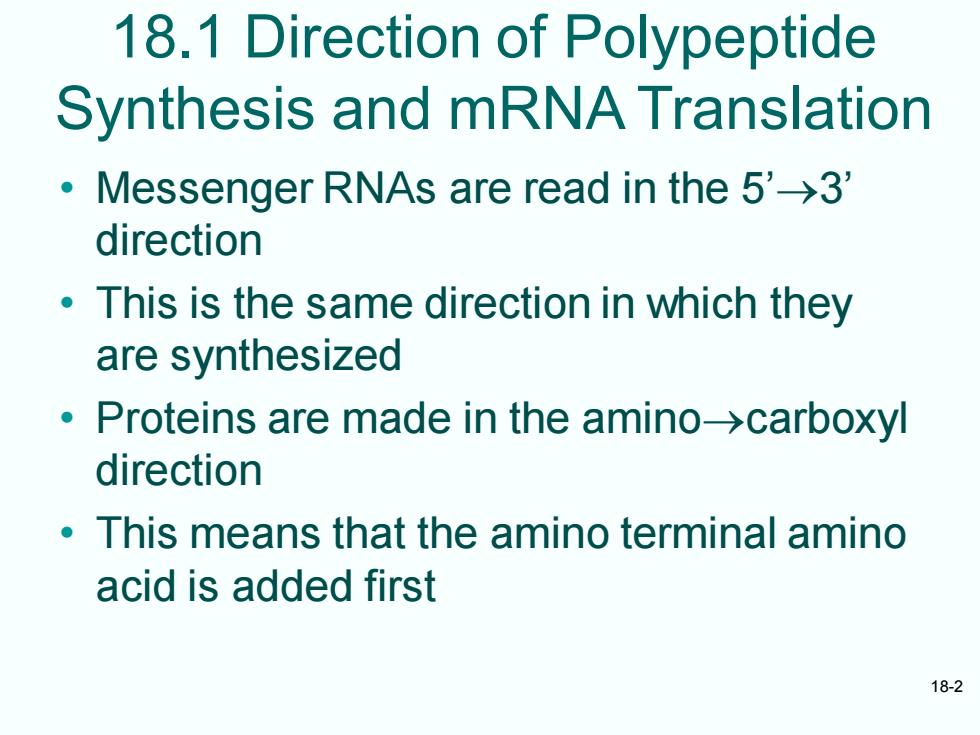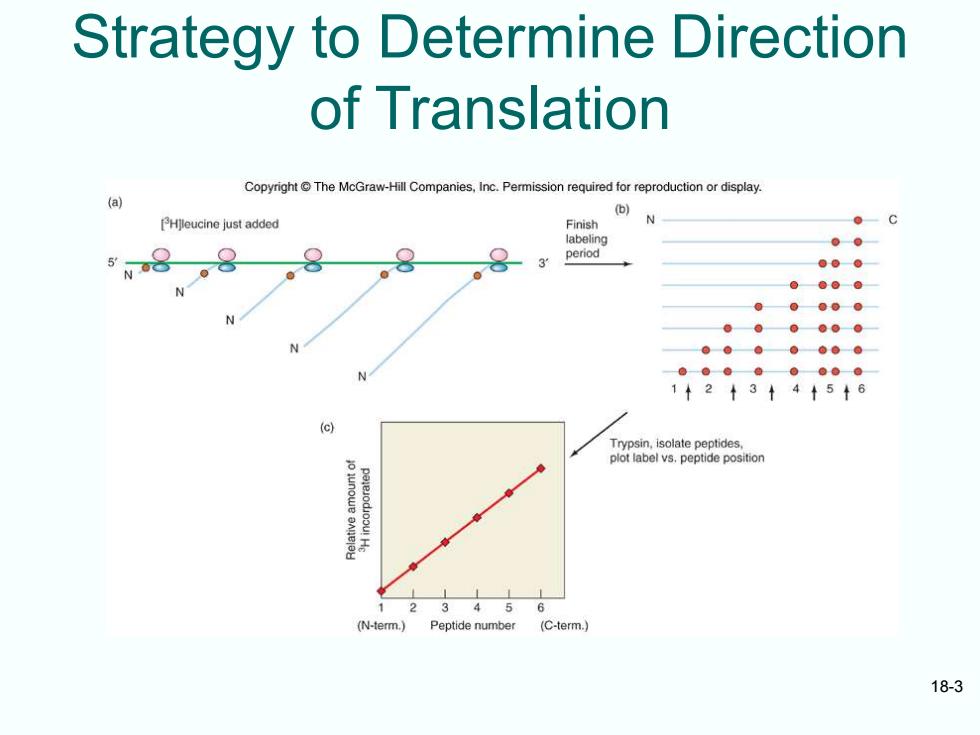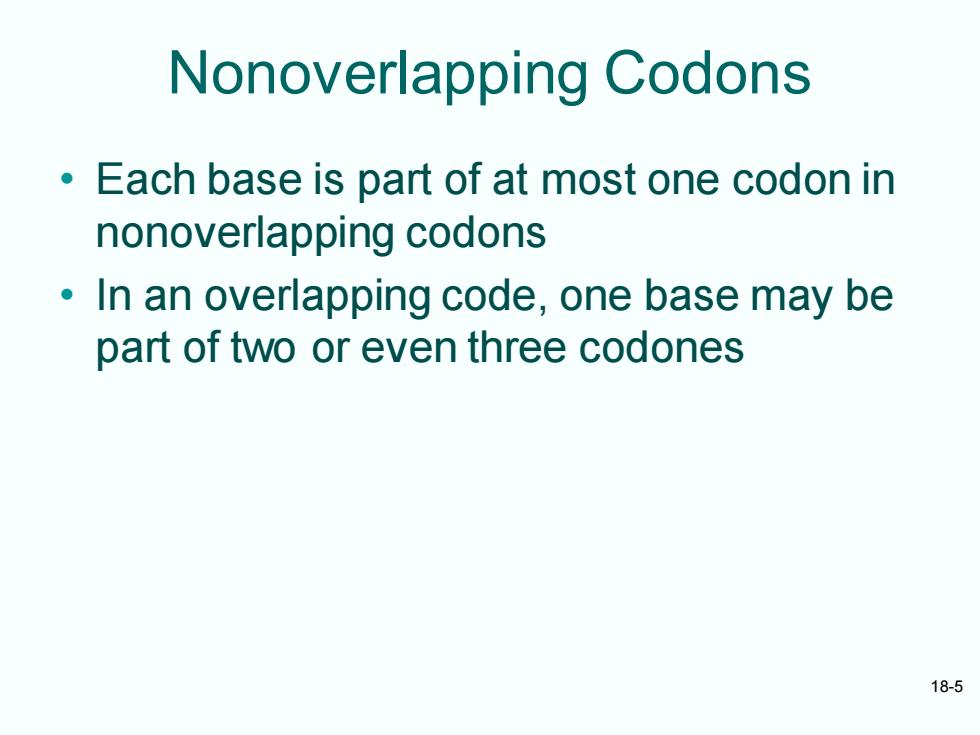
Chapter 18 The Mechanism of Translation Il: Elongation and Termination Copyright The McGraw-Hill Companies,Inc.Permission r d for reproduction or dis
Chapter 18 The Mechanism of Translation II: Elongation and Termination

18.1 Direction of Polypeptide Synthesis and mRNA Translation ·Messenger RNAs are read in the5'→3' direction This is the same direction in which they are synthesized ·Proteins are made in the amino→carboxyl direction This means that the amino terminal amino acid is added first 18-2
18-2 18.1 Direction of Polypeptide Synthesis and mRNA Translation • Messenger RNAs are read in the 5’→3’ direction • This is the same direction in which they are synthesized • Proteins are made in the amino→carboxyl direction • This means that the amino terminal amino acid is added first

Strategy to Determine Direction of Translation Copyright The McGraw-Hill Companies,Inc.Permission required for reproduction or display. (a) HJleucine just added Finish abeling 5N8 。8 period N 00000 0000。●0 1↑2↑3↑4↑5↑6 Trypsin,isolate peptides, plot label vs.peptide position (N-term.) Peptide number (C-term.) 18-3
18-3 Strategy to Determine Direction of Translation

18.2 The Genetic Code The term genetic code refers to the set of 3-base code words (codons)in mRNA that represent the 20 amino acids in proteins Basic questions were answered about translation in the process of "breaking"the genetic code 18-4
18-4 18.2 The Genetic Code • The term genetic code refers to the set of 3-base code words (codons) in mRNA that represent the 20 amino acids in proteins • Basic questions were answered about translation in the process of “breaking” the genetic code

Nonoverlapping Codons Each base is part of at most one codon in nonoverlapping codons In an overlapping code,one base may be part of two or even three codones 18-5
18-5 Nonoverlapping Codons • Each base is part of at most one codon in nonoverlapping codons • In an overlapping code, one base may be part of two or even three codones